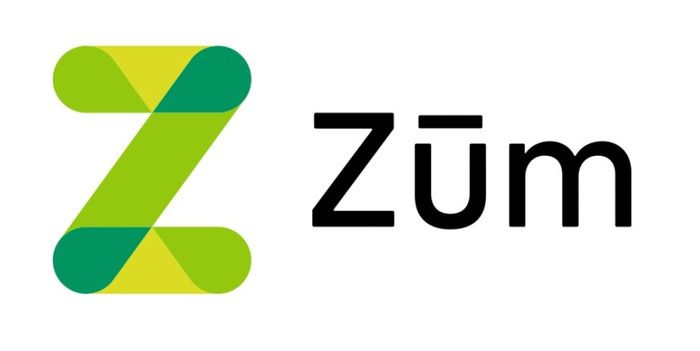Why I Invested: Zum
Why I invested: A writing series on early stage angel investing chronicling the rationales behind various early stage tech bets by Pete Kazanjy.
Zum’s a cool story of how a “B2B-lite marketplace” turned into “B2B Heavy” in the realm of student transportation, to substantial upside.
As context, I had been friends with the guys at Chariot, and was always intrigued by the idea of better mobility solutions through smarter routing, purpose made hardware, and such. Unfortunately, Chariot was going up against a myriad of other solutions: Uber / Lyft, mass transit (e.g. San Francisco’s MUNI and BART), professionals driving themselves, bicycling, etc. A lot of competition. (They were eventually acquired by Ford and later shut down. Tough business for sure.). But helping those guys out here and there put the bug in my ear about better “micro-mass mobility” solutions through better tech.
Student transportation didn’t really have any of the issues Chariot had. Outside of the city, kids either can take the bus, or get driven to school. Bus routes are problematic in that they’re very static and require a lot of “deadweight time” of kids on the bus traversing a long route to pick up a bunch of other kids in order to make the route efficient. And a lot of the time you’re just not “on the route.” Parents driving their kids is problematic because it’s a pretty substantial opportunity cost by the parents that only gets more pronounced with more kids. Not to mention a single car driving one or two kids is really inefficient.
Zum’s initial solution to this was tech-forward, compensated, carpooling. While it feels B2C (and thus not in my wheelhouse), the recurring nature of the solution (and eventual school district partnerships) made it more “B2B lite” (kind of like Faire), with more commercial intensivity per customer acquired than pure B2B marketplaces like Uber, Lyft, Doordash, Instacart, etc.
The insight the Zum folks were advancing against was that, on the demand side, there are a ton of kids being driven to and from school by parents who would be more than happy to have another, trusted, party do it for them. And on the supply side, there are plenty of parents out there driving their own kid to school who would be stoked to pick up a couple other kids in exchange for some compensation. They’re already on their way, and their minivan has four other empty seats. Why not fill them? Not just that, with more granular “supply objects” (minivans, cars, etc. vs. buses), way more routes can be run, providing more coverage than traditional bus networks. And the “driver” parents are already driving (and it’s unlikely their full time job)…so it can be lower cost than traditional bussing. So a better product and cheaper - something that Sarah Tavel talks about looking for in enduring businesses. Smart phones and the internet could facilitate the making of this market.
When it comes to alternatives, kids under 16 can’t drive themselves, and for the most part, for non-highschoolers, public transit is going to be out of the question as well. And because kids need specialized adult supervision, this isn’t really something Uber and Lyft can tackle directly.
Even better, unlike Uber / Lyft, this is a recurring relationship. Adult professionals commute in a variety of ways. Taking BART in the morning but Uber in the evening. Or driving themselves today but taking public transit tomorrow. Kids go to and from school in a fairly consistent way every day.
And the problem is just massive in scale. The number of students in need of transportation is just massive - north of 50m people. And unlike “work from home”, commuting to school isn’t going to change anytime soon.
When it came to imagining how this could “go right” there was a compelling vision. Zum had the trappings of AirBNB, where “unprofessional” (extra rooms, air mattress) supply was used to bootstrap a market by serving unmet need (travelers who couldn’t afford Hilton) - but in this case, it was kids who are being driven to school solo by parents now being driven by other (paid) parents with three other kids in a mini-van. Once the market was humming, they could move on to more “professional” supply (dedicated drivers), and different SKU types (Mercedes Sprinter Vans). It didn’t take much imagination to see an end state where Zum would have recurring carpooling minivans, dedicated “small bus / vans”, and even full bore buses. Which is how things have ultimately played out.
Lastly, because there’s a given monopoly buyer in a given region (the school district) it stood to reason that the provider that gets to scale on a region by region basis could win the entire market (at least in that region - less likely that there are inter-region network effects like with an eBay). This has since been borne out with Zum partnerships with Oakland, San Francisco, Los Angeles, and Seattle school districts. And of course these larger deals lead to capital efficiency on both supply and demand acquisition by being the “approved provider” (this was something I helped with the Chariot guys on - positioning Chariot to tech companies to provide dedicated intra-city transportation to their staff versus being pure B2C).
And speaking of eBay, that’s where Ritu, the CEO, had cut her teeth on marketplace dynamics. Not to mention - Ritu was a parent herself and had felt this pain point as a business professional who would have loved help dropping her kids off at school! When I met her, and she shared her vision, I was totally convinced. I ended up putting a larger check (for me, at the time) into their 2016 seed round, and they’ve since gone on to raise $200m+ from Sequoia, Spark, BMW, and Softbank.
